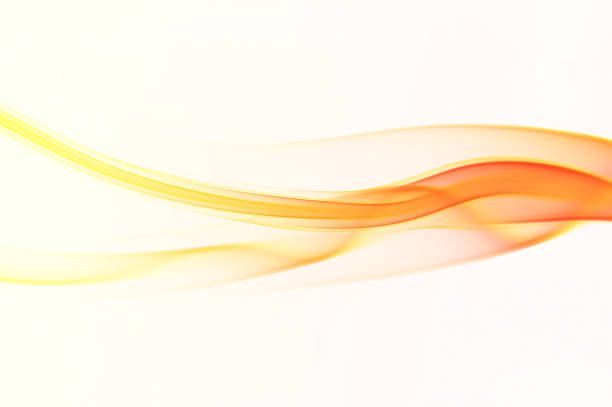Written by Heather Dick
PRESENCE & POWER Series - Part 3
Freeing Yourself Through Relaxation
Welcome back to my Presence and Power Series. In my first two posts, we explored the two B’s in B-BRAVE* - BODY and BREATH. Being connected to and aware of what is happening both inside and outside of your BODY grounds you, energizes you and brings you immediately into the present moment. When your BREATH is uncensored and freely moving in and out of your body, it reveals your internal emotional life and thoughts from moment-to-moment and you possess a vulnerability and an immediacy that we find fascinating and magnetic. The challenge, however, is to stay open and present, vulnerable and immediate under the pressures of stressful situations whether they are relationships, auditions, performances, exams, presentations or more.
*When your BREATH is uncensored and freely moving in and out of your body, it reveals your internal emotional life and thoughts from moment-to-moment and you possess a vulnerability and an immediacy that we find fascinating and magnetic.*
Close your eyes and think about the last time you found yourself in a stress-filled situation. Perhaps you were nervous about making a good or a first impression, writing an exam or meeting expectations (those of others not your own). How many specific details can you remember about the moment - the colour of the room, the person(s) you were talking to, whether you were standing or sitting, what you were saying? As you go back to that moment in your mind notice what begins to happen in your body. Perhaps your throat or chest begins to tighten or your palms begin to sweat. Do your feet begin to grip the ground inside your shoes? Maybe you feel as if there are butterflies in your stomach or you begin to hold your breath or even forget to breathe. When I relive stress-filled situations, I experience similar reactions. What is most interesting to notice, however, is that our reactions are involuntary, rapid and entirely physical. And, we don’t have to think about them.
To stay alert and ready for action your breathing must be controlled and your muscles must be ready to spring.
Why does this happen? The answer is because when you go to your imagination and stimulate a memory, your brain doesn’t know whether the situation is real or imaginary. What it does sense, however, is the stress you’re starting to feel and, because it wants to protect and help you to stay in control of the situation, it puts you on alert. Whether you’re going to stand and fight or run to safety your body must be prepared. To stay alert and ready for action your breathing must be controlled and your muscles must be ready to spring.
 Photo courtesy of Engin Aykurt on Unsplash
Photo courtesy of Engin Aykurt on Unsplash
In any fight or flight situation, any stimuli that might cause you to second guess a physical decision or prevent you from physically reacting quickly and decisively, need to be turned down enough so that they don’t interfere with your heightened focus on safety and your physical agility and responsiveness. In narrowing your focus, your brain restricts your ability to be fully present in the whole of your body and aware of outside influences, such as unimportant sounds, that might distract you. Have you ever noticed that when you are in a heightened state of alertness your ability to hear instructions or dialogue around you is becomes limited or that the instructions are easily forgotten? That’s why.
The paradox is that, as actors and communicators, our goal is to share what we are emotionally feeling and thinking with our audience, fears and all.
The turning down of stimuli also extends to emotional awareness because becoming overwhelmed by emotions could cause you to hesitate, make poor decisions or even mistakes. Restricted or controlled breathing and muscle tension serve to dampen emotions and cut off awareness of all but the need for physical action to stay safe.
The paradox is that, as actors and communicators, our goal is to share what we are emotionally feeling and thinking with our audience, fears and all, so that they can connect with our characters and understand them and their issues on a visceral level, not a thinking level. If or when our body physically impedes our emotional flow, it’s almost impossible to share and communicate with others in any meaningful, open way.
The keys to staying connected to myself are AWARENESS and RELAXATION. RELAXATION is the R in B-BRAVE.*
So, how can we remain open, grounded, emotionally present and alive ‘in the moment’ without losing the context when our brain begins to respond? If I’m connected to my breathing and I’m alive in my body, then I can be much more sensitive to small shifts in my breathing and muscle tension. The moment that I become aware that fear is creeping in as I wait to audition, deliver a speech, teach a lesson or stay present in a discussion, I can check in with my breath, breathing rhythm and muscle tension. If I notice shifts beginning to happen, then I can immediately start to consciously respond while they’re still small so that I can stay in control of my situation and myself. The keys to staying connected to myself are AWARENESS and RELAXATION.
RELAXATION is the R in B-BRAVE*. The more relaxed I can be under stress, the more aware I can be of what is happening inside my body, of my body in space (refer to my first blog about BODY) and of the sounds I hear around me. RELAXATION helps me to stay in the context of the situation and helps my brain understand that, while I might be nervous, I’m not in immediate physical danger (hopefully). Through RELAXATION, I stay rooted in my rich emotional life, fully present and living ‘in the moment’, ready to respond, react and improvise as needed.
The following activity will show you how to use your free flowing breath to release tension and stimulate relaxation.
 Ribbon of Colour - freeimages.com
Ribbon of Colour - freeimages.com
When you listen to this audio file, pause the recording whenever you need a little more time for personal exploration. To avoid long pauses and because the more often you practice the quicker you will be able to relax the specific muscles we focus on, I talk you through the activity at a good pace. However, I do suggest moments when you might like to pause the recording and take a little more time to fully explore in your own body before continuing. It’s all up to you. Enjoy.
The Activity: You’ll be sitting for this activity so that your muscles can more easily relax and let go, so please find yourself a chair with a straight back. A kitchen chair is ideal.
Sit all the way to the back of the seat and allow the back of the chair to support your spine. If your feet aren’t fully touching the floor, put a book or two under them so that your knees can be bent at right angles with your feet supported from underneath, not hanging.
Close your eyes if you’re in a safe place. If you can’t close your eyes, let them soften them so your vision is a little blurry. That will help you to go to a more internal, private place as you explore.
Begin with a quick, internal body scan travelling from your head down to your toes. Where are you holding tension? Put a little extra focus around your eyes and temples, the hinge of your jaw, your tongue, your throat and your chest. These are areas we often skim over, but where we can hold a great deal of deep tension without realizing it, and tension here can affect both the free flow of breath and the free movement of your vocal folds which will affect your voice. So, it’s important that the muscles in these areas be as relaxed as possible. And, this is the part of the body that we’ll be concentrating on in this activity.
Focus now on your breathing. Let your lips part slightly so that your breath falls in and sighs gently up and out through your mouth. Don’t let it enter or leave through your nose.
Lick your lips and feel the cool, dry outside air flowing in over your tongue and along your hard palate before dropping down into your lungs. Imagine it turning warm inside your lungs. Sigh it up and out through your lips into the air in front of you. Let a new breath fall in over your tongue, fill your lungs and picture it turning warm. Sigh this breath up and out. Is your body beginning to relax?
Now, bring your awareness to one tension spot around your eyes, temples, jaw or tongue that you identified during your earlier body scan. As your next breath falls in, ‘see’ it is pastel yellow in colour. After it drops down into your lungs, picture it spreading up through your body to this tension spot, swirling around inside the muscles there and turning bright neon yellow as it absorbs the energy of the tension. As you sigh this breath up and out, imagine it carrying the tension out of your body and flowing, like an airy stream of yellow, out through a window, a door or down a hallway away from you.
As the next yellow breath falls into your body, repeat these steps. Imagine it spreading through your body to the same tension spot, absorbing the tension, turning bright neon yellow, and then carrying that tension up and out of your body on another sigh. Continue exploring until all the tension has been released from these specific muscles. It might take you four or five sighs, be can you feel those muscles relax a little more with each subsequent breath?
When you picture your breath carrying tension out of your body and then out of the room, you’re consciously and unconsciously giving yourself permission to physically and mentally let go of that tension. You’re giving yourself permission to be more free. If you physically sigh as your breath flies out even more tension will be released. So, think of sighing.
Now, move to the next tension spot in your jaw, tongue or throat and repeat these steps from the beginning. Then, continue moving down through your body in this way finishing in your chest.
As you let go of the tension here, notice the range of movement in your ribs. Perhaps they’re moving a little more freely and fully and allowing your lungs to fill with more air?
Are you aware of any changes in your body? There is no right or wrong here. I simply encourage you to be aware of the shifts, subtle or large, that have happened in your body as tension was released.
Now, bring your focus back into the room by actively looking at, and seeing, specific things around you. Do you feel more relaxed, emotionally alive and perhaps more focused as well? Stand and take a walk, if you can. Finally, feed in an impulse for a yawn and a stretch and go about your day.
Over the next week, continue to explore this method of using your breath and imagination to release tension.
Use this audio file of the exercise from your phone, any where and any time.
I encourage you to be patient. In the beginning, take all the time you need to explore. This is both a physical and an imaginary activity that may take a little time to master.
And, look for my next post on A = AWARENESS in the coming weeks.
Until then, *B-BRAVE and enjoy being alive, connected and relaxed in your body and breath.
*B-BRAVE © Heather Dick, 2020.